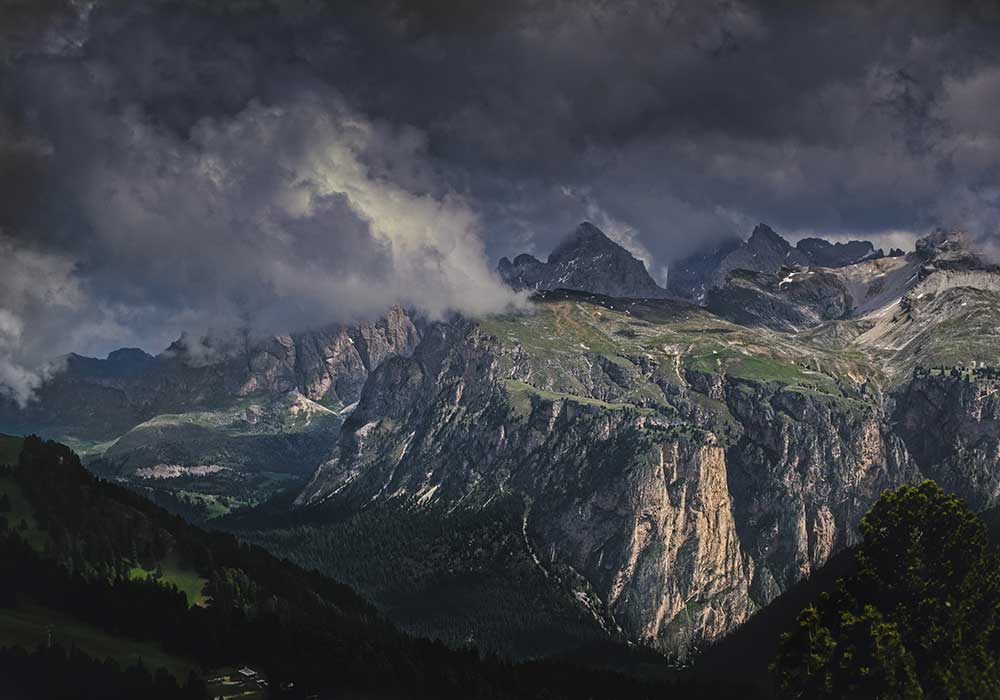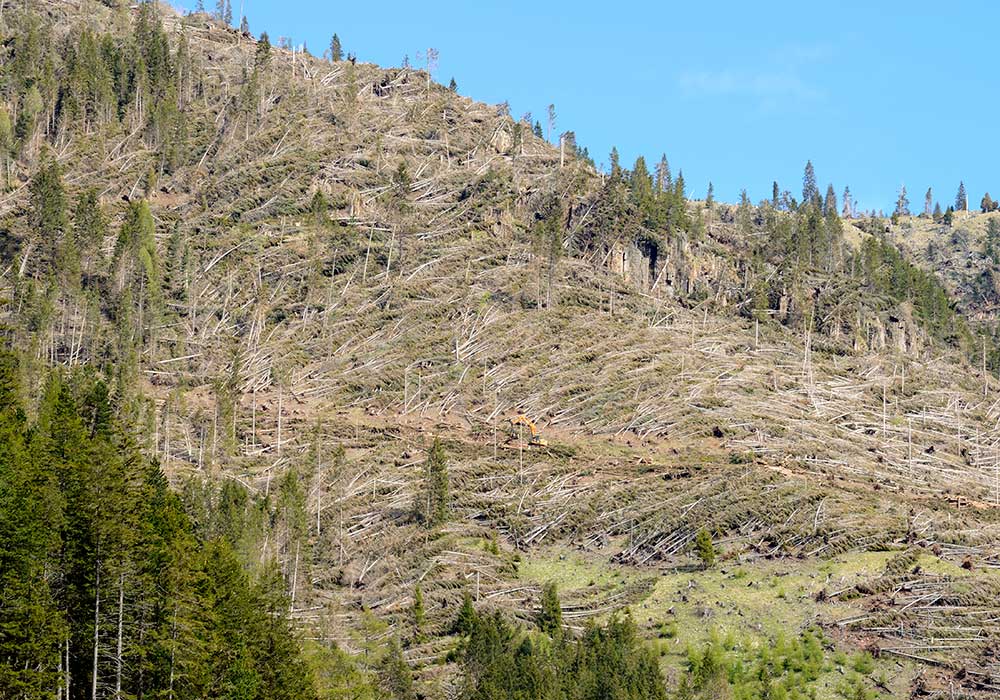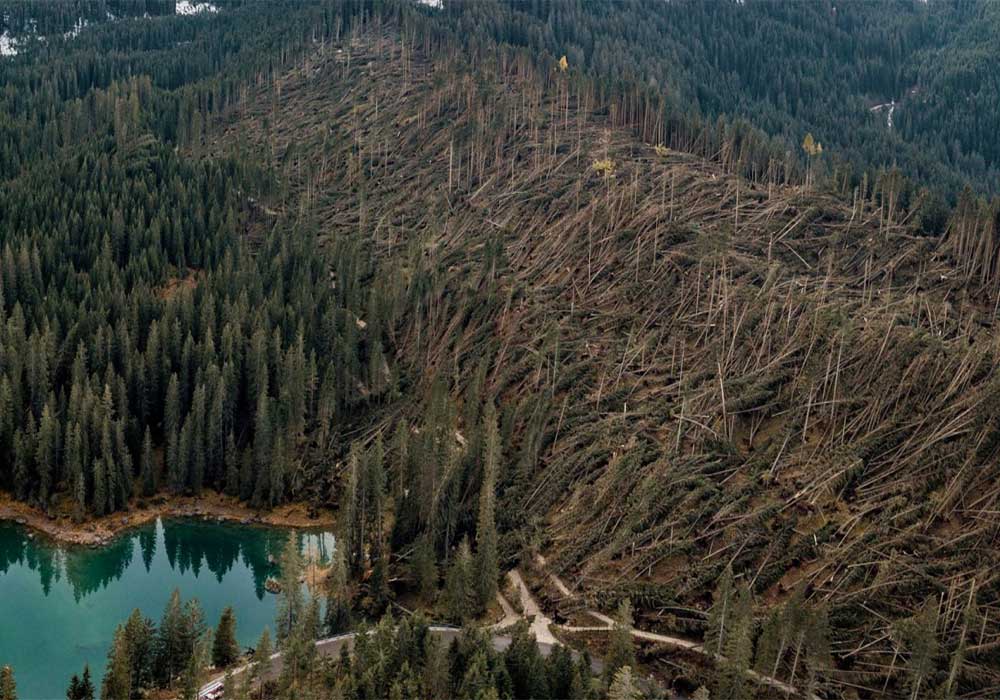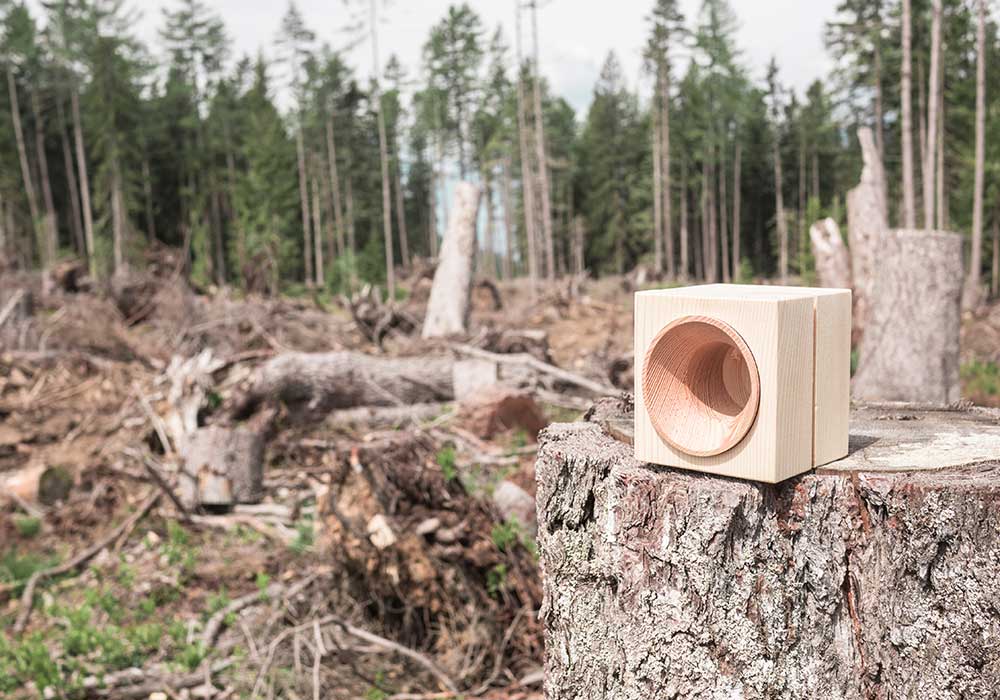“I heard tree trunks breaking and trees falling around me. It sounded like the mountain was collapsing.”
Storm VAIA continues to accompany us through the traces it left behind in the areas of the Alpine arc. Those days at the end of October 2018 will remain in the memories of those who experienced them – like Federica, who still remembers the frightening sound of the falling trees in the forest next to her house.
It was an event that has attracted a lot of attention over the last two years, not least because of its anomaly. Elsewhere, we have summarized the formation of the atmospheric depression and its effects and explained why scientists have chosen this name.
Almost two years later, we feel that telling the story from the inside perspective gives it a deeper meaning, especially for those who have only recently become involved with the events. Here’s how we at VAIA experienced the days of the storm first-hand.
Foreword
Monday, October 29, 2018: The previous day’s notification from the civil protection authorities had already triggered the alarm, as Federico, co-founder of VAIA, recalls. Several municipal administrations had already advised against drinking tap water for a few days, as the swollen torrents had put the filtration and purification systems to the test.
Rationing, which is common for many inhabitants in southern and central Italy, is a rare occurrence in a province like Trento, which has no problems with its water supply and obtains 90% of its electricity consumption from hydropower plants.

The dramatic development of the weather was so unexpected that the Cineforum at the Pergine Theatre was not cancelled. Marianna was there and has vivid memories of the evening. Even before the screening could begin, everyone realized what was going to happen: There was a power cut throughout the village, it was pitch black outside and the wrought-iron benches of the neighboring bar were barely visible, moved by the force of the wind. In these minutes of indecision, only the flashing lights of the fire engines flickered on as they were called out to clear the avenue of felled tree trunks.
There was nothing left to do but go home and hope we didn’t get stuck on the road. Apart from the darkness, it was silent all around us. The situation was surreal, even for a city that has not made nightlife its trademark. An image that is almost familiar to us today, so fresh is the memory of deserted and desolate urban arcades.
When you entered the house, only one sound accompanied the night watch: the piercing whistle of the wind drowned out all other sounds and was so constant that it took on a consistency of its own. Those who lived in the worst affected areas could hear the groaning of the wood as it stretched until it broke. The silent growth of the wood gave way to a thunderous, dramatic knocking. The only thing left to do now was to wait for the sun to rise.
The day after the storm
The “day after” summarizes everything that the VAIA storm left behind in the collective memory.
The day after, the broken telephone lines, the blocked mobility, the lack of electricity remained. The ability to communicate, return home or go to work has disappeared, as has the functioning electronic system on which our daily lives are based. Some places in the Belluno area were the hardest hit, as landslides led to several days of isolation.
The next day, messages piled up on the phones of those who had grown up there and had families, but who were now studying or working elsewhere. The difficulty of finding specific information was exacerbated by the communication blockade, so people moved from one chat room to the next in search of solace.

Awakening, however, initially brought a distorted landscape: looking up, the line of the mountain, previously soft and rounded by the fir roofs, appeared broken, with a few scattered trunks that had survived the whip of over 190 km/h.
When I woke up, the effects of the disaster became clearly and unmistakably visible. If you could only guess at the damage before going to bed, you began to reckon with the daylight. The wind would continue to blow during the day on Tuesday, but the signs were unmistakable. Only pictures can do justice to the devastation, and often not even that. Often the only cure for disbelief (or apathy) is to go to the site.
See with your own eyes
For Federico, returning to the VAIA sites is a matter of a few days. On his return from Ferrara, where he is writing his dissertation, he asks himself one question above all: How will the places where I grew up have been reduced? How much of the landscapes that characterize my memories will have remained intact?
“Let’s go and see. It’s not every day that you call your best friends to tell them these simple words – I need to see with my own eyes what has happened, I’m ready to let these images inside me, but come with me. Unfortunately, the roads to the little hut in Val dei Mocheni were still closed, so we had to wait a few more days to see them again.

However, the VAIA storm did not only affect the residents. Giuseppe, co-founder of VAIA, is a young Sicilian man who, like everyone else, learnt about the effects of VAIA from the news. Those days of turmoil had shaken the whole of Italy: as the wave of storms spread across the entire peninsula, one disaster followed another. With sensibilities numbed by so many events, it is normal for the news to be consumed and put aside.
A few months later, in January 2019, Federico showed him a passive wooden amplifier via video call and told him how this small object was connected to the storm that had just passed over the Central Eastern Alps. It’s also time for Giuseppe to experience the effects of VAIA first-hand.
The VAIA cube is born
The visit to Trentino is a turning point for Giuseppe. The contrast between the intact valleys and the devastated valleys brings the vulnerability of the land into sharp relief. The tree cemetery is a tangible sign of a forest that was perceived by the inhabitants as a second home and now no longer serves as a refuge for the community.
Since that visit, the project has evolved from a game born out of an exchange between friends to a vision that sought an entrepreneurial structure because it could make a difference. “Try to leave this world a little better than you found it,” wrote Baden-Powell in his final message. VAIA Cube is a multi-layered challenge that combines youth entrepreneurship with sustainability and the circular economy. To date, more than ten thousand people have taken part in the project and taken a small piece of the torn forest home with them.

Sometimes you must give up hope to regain what is closest to your heart. In the affected landscapes, the wound will be felt for several decades to come, but for many, VAIA was an opportunity for revival, for building a new relationship with a changed territory. The resilience of local communities shows that such shocks require adjustments, often dictated by necessity, while creating space for solutions that are more in tune with the spirit of the times. At VAIA, we continue to be inspired by the values that have driven us from the beginning, since that night at the end of October that seems ever more distant and yet so close.